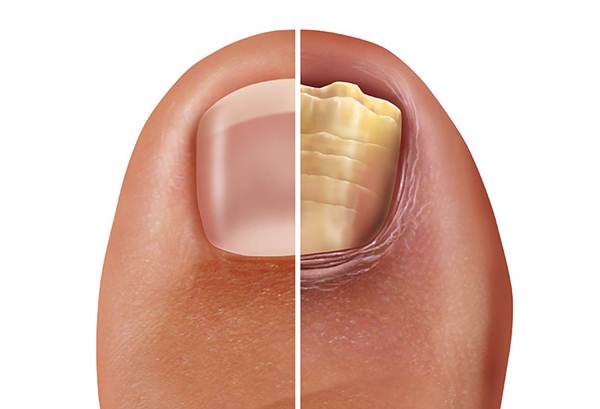Toenail fungus, medically known as onychomycosis, is one of the most common fungal infection that affects millions of people worldwide. While it can cause several uncomfortable symptoms, one of the most concerning concerns for many people is whether toenail fungus can cause toenail loss. In this post, we will explore the symptoms, causes, and potential outcomes of toenail fungus infections, shedding light on the likelihood of toenail loss and treatment options.
Understanding Toenail Fungus
Toenail fungus is caused primarily by dermatophytes. Dermatophytes is a type of fungus that thrives in moist, warm environments, such as locker rooms, showers, and swimming pools. When these organisms find their way into the nail bed, they start to grow and multiply, leading to an infection that gradually affects the toenail’s health and appearance.
Symptoms of Toenail Fungus
The early stages of toenail fungus infection symptoms that include:
- Thickening of the nail
- Yellow or white spots on the nail
- Discoloration of the nail (brown, yellow, or greenish)
- Brittle or crumbly texture
- Foul odor from the infected nail
- Distorted nail shape
As the infection progresses, the symptoms can worsen, leading to potential complications and significant discomfort.
Does Toenail Fungus Make Your Toenail Fall Off?

While toenail fungus can lead to significant damage to the affected nail, leading to changes in its texture and appearance, toenail loss is not a common outcome in most cases. The fungus first affects the nail plate and surrounding tissues, but the infection typically does not lead to complete nail loss.
In prolonged and severe cases, where the infection is left untreated, the fungus can lead to the toenail to become weak and separated from the nail bed. Eventually, the nail may become loose and may fall off on its own. However, it is important to note that this severe result is not the norm and can usually be prevented with timely intervention.
Prevention and Treatment
To prevent toenail fungus and its possible complications, it’s crucial to take the following preventive measures:
- Avoid walking barefoot in public areas: Wear sandals or flip-flops in public pools, locker rooms, and showers to minimize the chances of exposure to the fungus.
- Keep feet clean and dry: Wash and dry your feet regularly, paying extra attention to the spaces between the toes, to avoid creating a beneficial environment for fungal growth.
- Wear moisture-wicking socks: Select socks that wick away moisture and regularly change them, especially if your feet tend to sweat excessively.
- Wear breathable footwear: Choose shoes made of breathable materials that allow moisture wicking and proper air circulation, reducing the risk of fungal growth.
- Trim toenails properly: Trim your toenails and avoid cutting them too short, as this can create small openings for fungi to enter.
Treatment options for toenail fungus include:
- Topical antifungal medications: Prescription or over-the-counter nail lacquers, creams, or lotions containing antifungal agents can be directly applied to the affected nail to combat the infection.
- Laser therapy: Laser treatment is a new approach. It targets the fungal infection without causing damage to the surrounding tissues.
- Oral antifungal medications: Oral antifungal drugs may be prescribed for more severe cases, by a healthcare professional to address the infection from within.
- Surgical intervention: In some cases of severe toenail fungus leading to nail pain and deformities, surgical removal of the affected nail may be considered.
Conclusion
Toenail fungus is a common fungal infection that changes in the texture and appearance of the toenail and can cause uncomfortable symptoms. While toenail loss is a possibility in untreated and severe cases, it is not a common outcome. Early detection, preventive measures, and proper treatment are essential in managing toenail fungus and preventing potential complications.
If you suspect you have a toenail fungus infection, see a healthcare professional for an accurate and positive diagnosis and appropriate treatment plan to overall foot health and promote healthy toenail growth.


